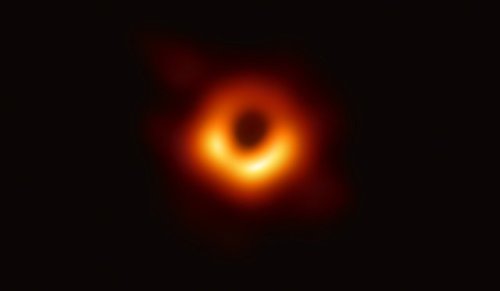Why Doesn;t Life….pick On Someone Her Own Size.. Ive Had Enuf
why doesn;t life….pick on someone her own size.. ive had enuf
More Posts from Doorframedemon and Others

Every Note, muffled Mystery Skulls
Candid pics? No, take cryptid pics of me. Make me as blurry as possible. My eyes glow. I’m in places I logically can’t be in.
20gayteen is almost over. then we’ll have 20biteen. but what will we do for 2020
dude seeing these Mega high quality images of the surface of mars that we now have has me fucked up. Like. Mars is a place. mars is a real actual place where one could hypothetically stand. It is a physical place in the universe. ITS JUST OUT THERE LOOKING LIKE UH IDK A REGULAR OLD DESERT WITH LOTS OF ROCKS BUT ITS A WHOLE OTHER PLANET?

Astronomers Capture First Image of a Black Hole
The Event Horizon Telescope (EHT) — a planet-scale array of eight ground-based radio telescopes forged through international collaboration — was designed to capture images of a black hole. Today, in coordinated press conferences across the globe, EHT researchers revealed that they have succeeded, unveiling the first direct visual evidence of a supermassive black hole and its shadow. The image reveals the black hole at the centre of Messier 87, a massive galaxy in the nearby Virgo galaxy cluster. This black hole resides 55 million light-years from Earth and has a mass 6.5 billion times that of the Sun. Supermassive black holes are relatively tiny astronomical objects — which has made them impossible to directly observe until now. As the size of a black hole’s event horizon is proportional to its mass, the more massive a black hole, the larger the shadow. Thanks to its enormous mass and relative proximity, M87’s black hole was predicted to be one of the largest viewable from Earth — making it a perfect target for the EHT. The shadow of a black hole is the closest we can come to an image of the black hole itself, a completely dark object from which light cannot escape. The black hole’s boundary — the event horizon from which the EHT takes its name — is around 2.5 times smaller than the shadow it casts and measures just under 40 billion km across.
Credit: ESO

PERSEID METEORS TO REACH PEAK ACTIVITY ON 12 AUGUST
The annual Perseid meteor shower is set to light up the skies over the UK [and much of the rest of the world] on the night of 12-13 August. The new Moon will mean a darker sky and perfect conditions (given clear skies) for one of the summer months’ most breath-taking spectacles.
The Perseid meteors seem to come from a single point, the ‘radiant,’ situated in the constellation Perseus, giving the shower its name. This is however just an effect of perspective, as the meteors move parallel to each other, much like drivers see when driving in heavy rain.
The radiant will be visible from around 10 pm and at this time there will be the highest chance of seeing ‘Earth grazing meteors.’ These are meteors that skim the Earth’s atmosphere and so have long, blazing tails.
Observers can expect to see a few tens of meteors per hour, or one every few minutes, once darkness has fallen on 12 August. The number of meteors will peak in the early hours of 13 August, when up to around seventy each hour should be visible.
Meteors (also known as ‘shooting stars’) are small particles of dust, some as small as grains of sand, entering our atmosphere at high speed. The friction as they pass through causes the air around the meteor to heat up dramatically, resulting in a characteristic brief bright streak of light.
Meteor showers occur when the Earth passes through a clump of debris in space, as our planet moves along its orbit around the Sun. The dust causing this shower comes from a comet known as Swift-Tuttle, which last passed near Earth in 1992 and orbits the Sun approximately once every 133 years. The meteor shower is actually the Earth moving into the dust and rock left by the comet, which will next come close to Earth in an extremely near miss in 2126.
The shower will be visible all over the UK [and Europe, North America, etc.), as long as the skies are clear. Unlike a lot of celestial events, meteor showers are easy to watch and no special equipment is needed, although a reclining chair and a blanket make viewing much more comfortable.
Most importantly it will help to be away from artificial light, so observers are advised to avoid built-up areas if possible, and to try to find an unobstructed view of the sky towards the east. The Perseids are active from mid-July to mid-August, but for most of that time only a few meteors per hour are visible. So if clouds do make viewing impossible this weekend, the showers will continue for a few days more with reduced activity.
-
 herfacade liked this · 3 months ago
herfacade liked this · 3 months ago -
 agent--pizza reblogged this · 3 months ago
agent--pizza reblogged this · 3 months ago -
 agent--pizza liked this · 3 months ago
agent--pizza liked this · 3 months ago -
 digitalxcorpsesblog reblogged this · 4 months ago
digitalxcorpsesblog reblogged this · 4 months ago -
 digitalxcorpsesblog liked this · 4 months ago
digitalxcorpsesblog liked this · 4 months ago -
 coquettewhore420 liked this · 5 months ago
coquettewhore420 liked this · 5 months ago -
 obscure-witchfairy liked this · 5 months ago
obscure-witchfairy liked this · 5 months ago -
 vrvslvz liked this · 5 months ago
vrvslvz liked this · 5 months ago -
 cobic reblogged this · 5 months ago
cobic reblogged this · 5 months ago -
 cobic liked this · 5 months ago
cobic liked this · 5 months ago -
 bbygurl888 reblogged this · 5 months ago
bbygurl888 reblogged this · 5 months ago -
 amitybrightlights liked this · 5 months ago
amitybrightlights liked this · 5 months ago -
 cptnjaneway reblogged this · 5 months ago
cptnjaneway reblogged this · 5 months ago -
 partiallystarsmostlyvoid reblogged this · 5 months ago
partiallystarsmostlyvoid reblogged this · 5 months ago -
 vexvessar reblogged this · 6 months ago
vexvessar reblogged this · 6 months ago -
 vexvessar liked this · 6 months ago
vexvessar liked this · 6 months ago -
 fuckmarrykillrepeat reblogged this · 6 months ago
fuckmarrykillrepeat reblogged this · 6 months ago -
 camomillerat reblogged this · 6 months ago
camomillerat reblogged this · 6 months ago -
 awarmyellowlight reblogged this · 6 months ago
awarmyellowlight reblogged this · 6 months ago -
 awarmyellowlight liked this · 6 months ago
awarmyellowlight liked this · 6 months ago -
 takakenos reblogged this · 6 months ago
takakenos reblogged this · 6 months ago -
 pridoo liked this · 6 months ago
pridoo liked this · 6 months ago -
 tulip-jojo liked this · 6 months ago
tulip-jojo liked this · 6 months ago -
 teenzo reblogged this · 6 months ago
teenzo reblogged this · 6 months ago -
 teenzo liked this · 6 months ago
teenzo liked this · 6 months ago -
 mental-bycatch liked this · 6 months ago
mental-bycatch liked this · 6 months ago -
 sweetheartcafe liked this · 6 months ago
sweetheartcafe liked this · 6 months ago -
 bbugambilias reblogged this · 6 months ago
bbugambilias reblogged this · 6 months ago -
 wisteriaandwafers liked this · 6 months ago
wisteriaandwafers liked this · 6 months ago -
 pajaritodelamorr liked this · 6 months ago
pajaritodelamorr liked this · 6 months ago -
 imelikesit reblogged this · 6 months ago
imelikesit reblogged this · 6 months ago -
 dannypinot reblogged this · 6 months ago
dannypinot reblogged this · 6 months ago -
 dannypinot liked this · 6 months ago
dannypinot liked this · 6 months ago -
 wineyrose liked this · 6 months ago
wineyrose liked this · 6 months ago -
 mangomonet reblogged this · 6 months ago
mangomonet reblogged this · 6 months ago -
 unicornachos reblogged this · 6 months ago
unicornachos reblogged this · 6 months ago -
 seafearing reblogged this · 6 months ago
seafearing reblogged this · 6 months ago -
 neptunediary reblogged this · 6 months ago
neptunediary reblogged this · 6 months ago -
 gayest-bish-in-the-ish liked this · 6 months ago
gayest-bish-in-the-ish liked this · 6 months ago -
 foxconfessor liked this · 6 months ago
foxconfessor liked this · 6 months ago -
 kafkaesqueer reblogged this · 6 months ago
kafkaesqueer reblogged this · 6 months ago -
 crucefix liked this · 6 months ago
crucefix liked this · 6 months ago -
 soulofawander liked this · 6 months ago
soulofawander liked this · 6 months ago -
 walk-among-us reblogged this · 6 months ago
walk-among-us reblogged this · 6 months ago -
 moonearthangel reblogged this · 6 months ago
moonearthangel reblogged this · 6 months ago -
 decembercamiecherries liked this · 6 months ago
decembercamiecherries liked this · 6 months ago

